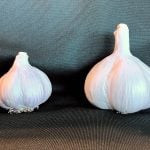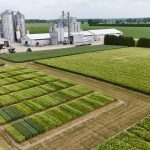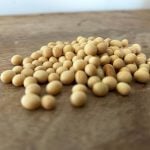MarketsFarm – Crops growing in areas of Saskatchewan which received recent rains are developing well. Meanwhile, those in dry areas, mostly in the west central region, are going backwards, according to the province’s weekly crop report released on July 28.
Rainfall varied across Saskatchewan with some areas receiving none and other getting drenched. Areas around the community of Bienfait had 69 millimetres of rain, while Lipton and Duck Lake were the recipients of 51 and 32.5 mm of precipitation, respectively.
As of July 18, crop development for fall cereals were 83 per cent normal or ahead of schedule, while pulse crops were at 82 per cent. However, some growers have begun desiccating their pulse crops to get them ready for combining. Spring cereals were at 72 per cent, while oilseeds were at 67 per cent.
Read Also

Brazil to reap record soy crop in 2025/2026, increase exports
Brazil’s Conab said the country will reap a record soybean crop of 177.6 million tons in the 2025/2026 harvest year, according to data released on Thursday.
Hot weather across Saskatchewan last week caused a slight decline in topsoil moisture with dry soils mostly found in the western half of the province. Cropland topsoil moisture was rated as 68 per cent adequate-to-surplus, with hay and pasture land topsoil moisture at 64 per cent.
Adverse weather has made haying difficult, resulting in lower quality. Still, haying operations were at 24 per cent standing, 24 per cent cut and 52 per cent baled or silage. Hay quality is rated 81 per cent good-to-excellent. Hay yields for dry land range from 1.06 to 1.84 tonnes per acre, while irrigated hay saw a range from 2.16 to 2.97 tonnes/ac.
Strong winds, hail, heat and drought stress are ongoing concerns for crops, as well as grasshoppers and crop disease. Fusarium and rust were found on cereal crops, while anthracnose, ascochyta and root rot were found on pulses. Growers continue to spray fungicide to protect their crops.















